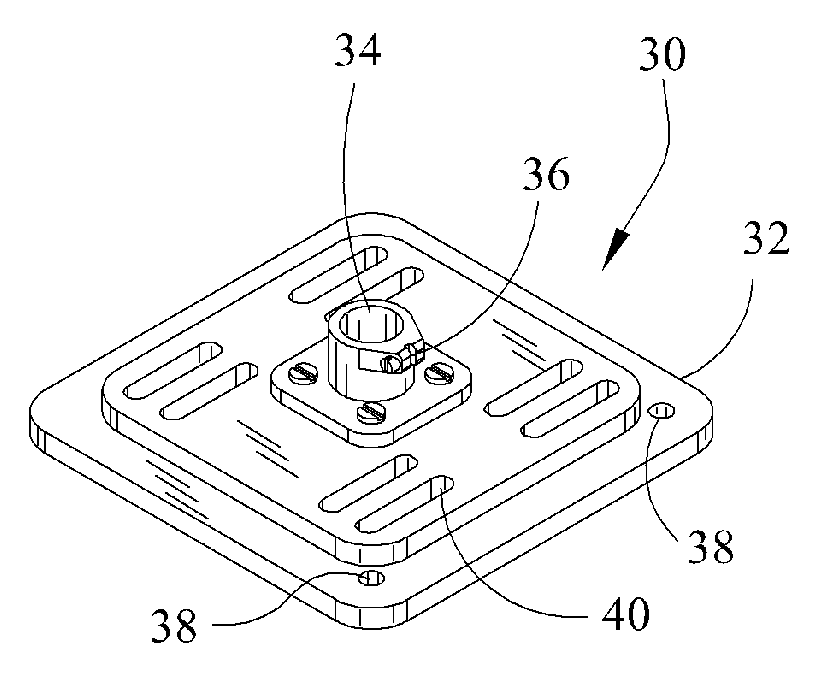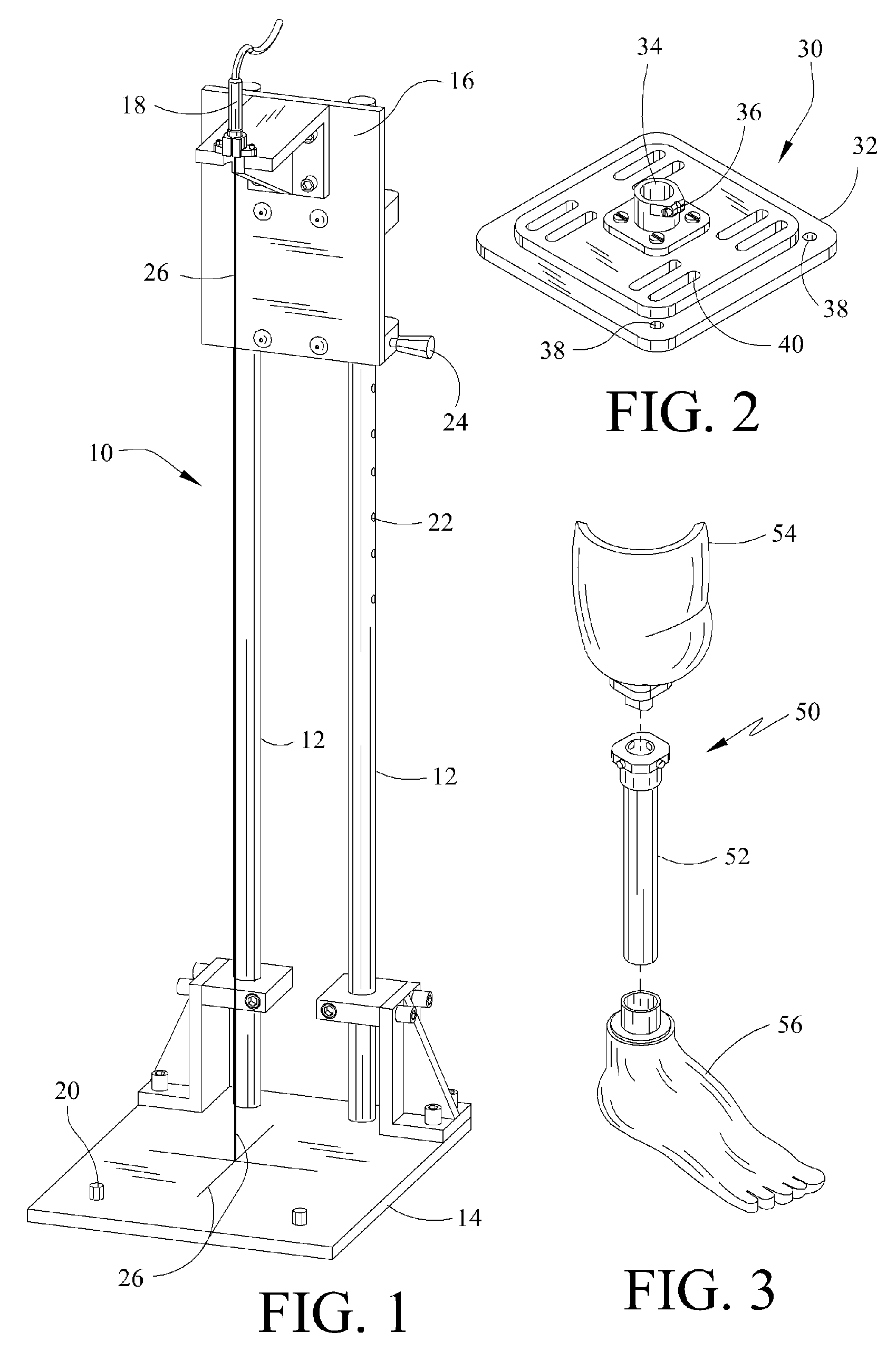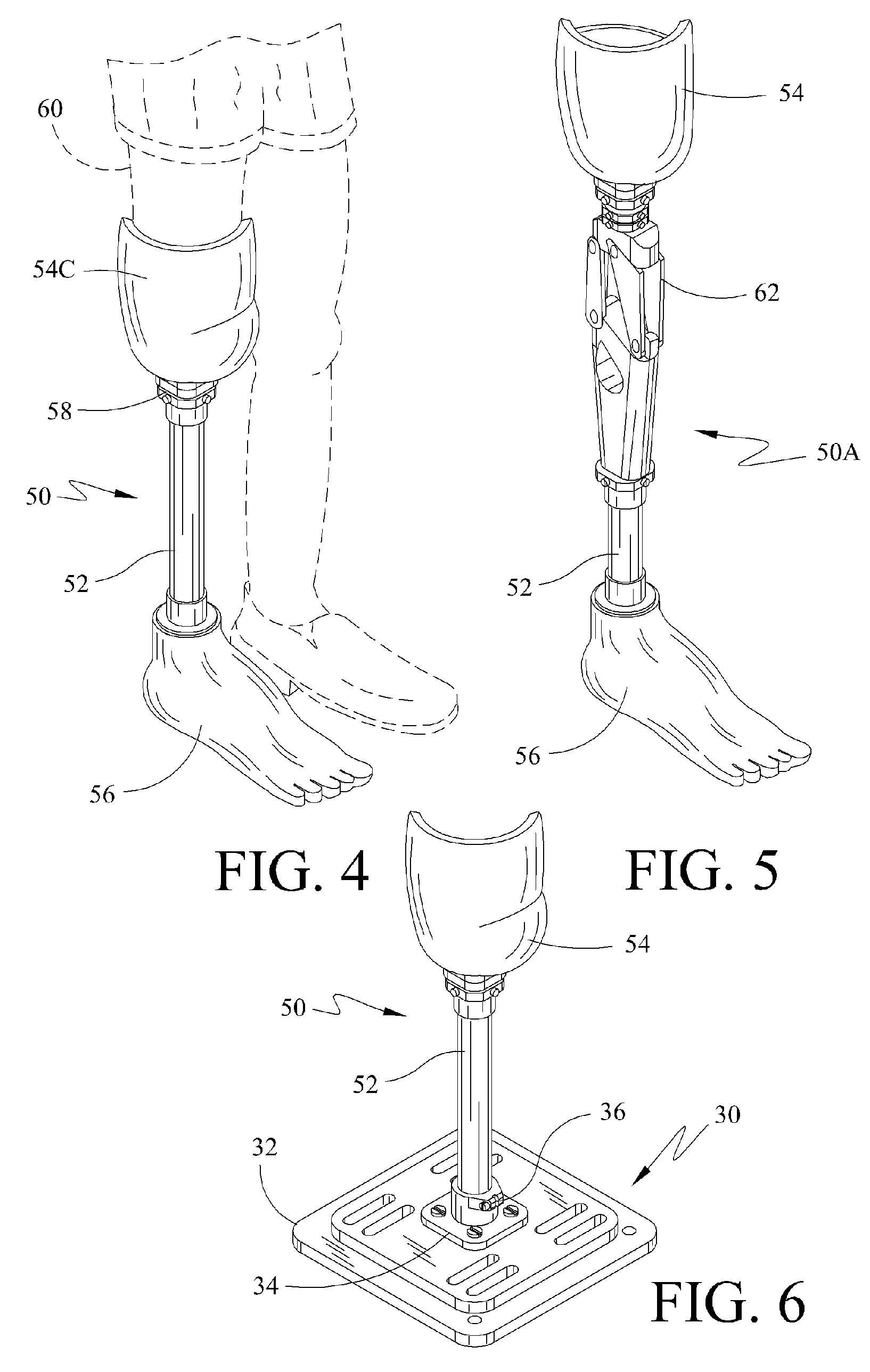Method and Apparatus for Restoring Alignment of the Support Socket in the Manufacture of Leg Prostheses
a technology for supporting sockets and leg prostheses, which is applied in the field of leg prosthesis manufacturing, can solve the problems of labor intensive, time-consuming, specialized and expensive, and the most delicate and time-consuming aspect of the fabrication process, and achieves the goal of saving fabricators time and money, and facilitating the manufacturing process. the effect of ensuring the alignment of the socket components
- Summary
- Abstract
- Description
- Claims
- Application Information
AI Technical Summary
Benefits of technology
Problems solved by technology
Method used
Image
Examples
Embodiment Construction
[0028] The alignment apparatus of the present invention is illustrated from the front in FIG. 1. Alignment apparatus 10 comprises a stand 12 with a base 14. A bracket 16 affixed to the top of stand 12 extends forward from the top of stand 12 and is used to mount a laser source 18 that points downward. Two base pins 20 attached to the top surface of base 14 are received by and hold in place the removable base plate 30 that is described with reference to FIG. 2.
[0029] Apparatus 10 is made height adjustable by way of a plurality of holes 22 drilled along the upper portion of the length of stand 12. Holes 22 receive a spring-loaded stand pin 24. Bracket 16 can slide up and down along stand 12. Bracket 16 is secured at given heights along stand 12 using stand pin 24 together with pin holes 22. Other known manners of making stand 12 height adjustable, although not illustrated here, are within the scope of the present invention.
[0030] Laser source 18 is shown illuminated in FIG. 1 emitti...
PUM
| Property | Measurement | Unit |
|---|---|---|
| height | aaaaa | aaaaa |
| shape | aaaaa | aaaaa |
| time | aaaaa | aaaaa |
Abstract
Description
Claims
Application Information
 Login to View More
Login to View More - R&D
- Intellectual Property
- Life Sciences
- Materials
- Tech Scout
- Unparalleled Data Quality
- Higher Quality Content
- 60% Fewer Hallucinations
Browse by: Latest US Patents, China's latest patents, Technical Efficacy Thesaurus, Application Domain, Technology Topic, Popular Technical Reports.
© 2025 PatSnap. All rights reserved.Legal|Privacy policy|Modern Slavery Act Transparency Statement|Sitemap|About US| Contact US: help@patsnap.com



